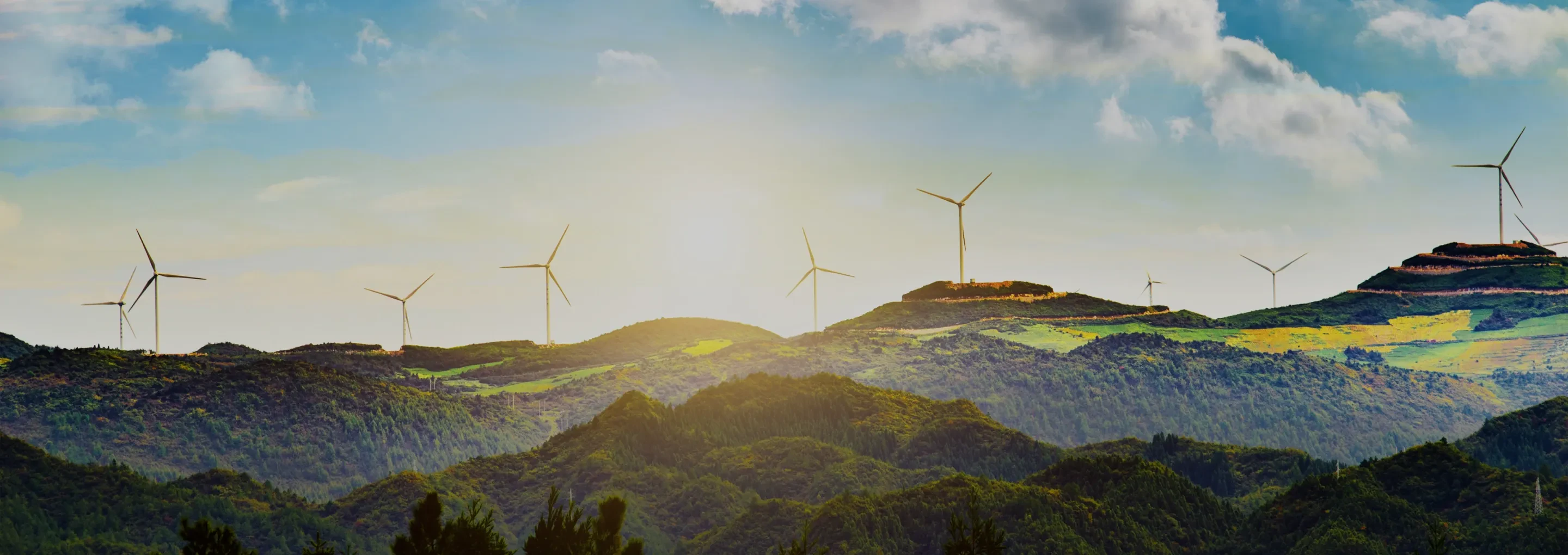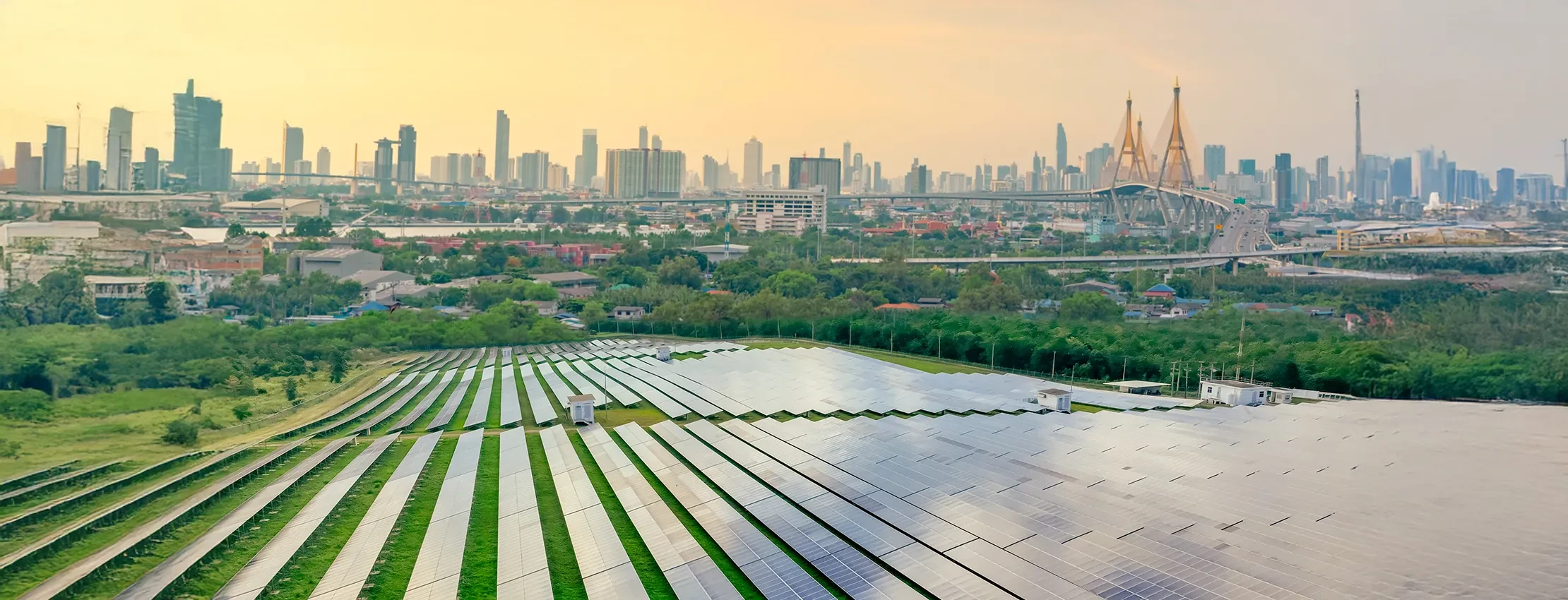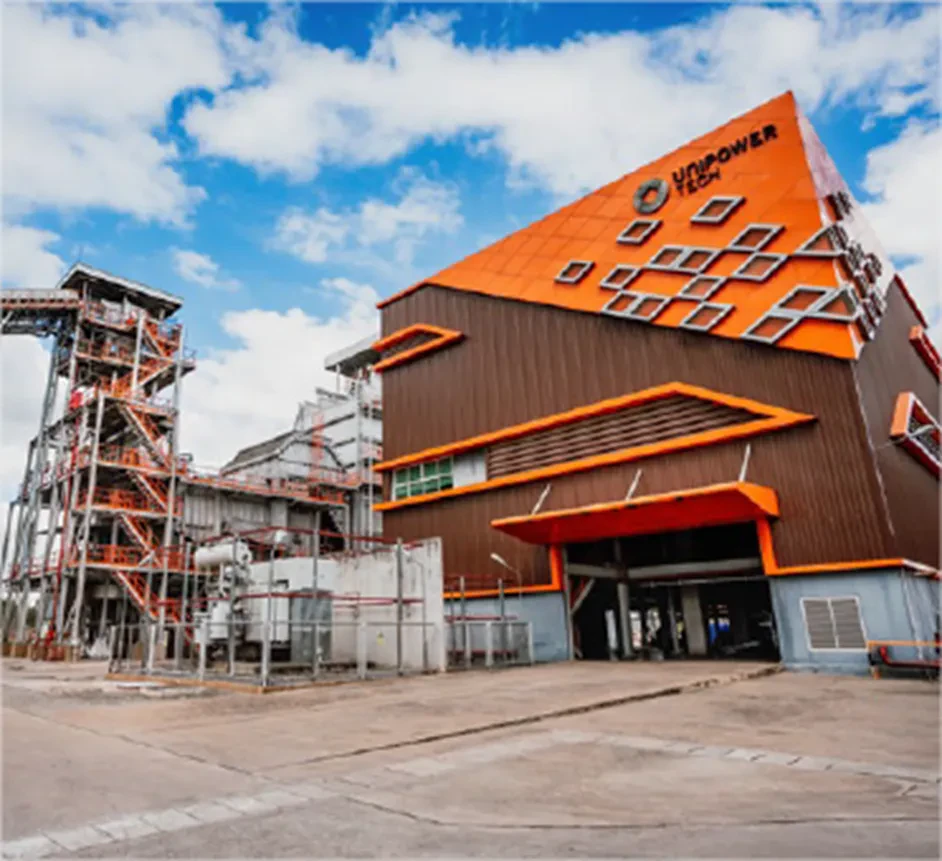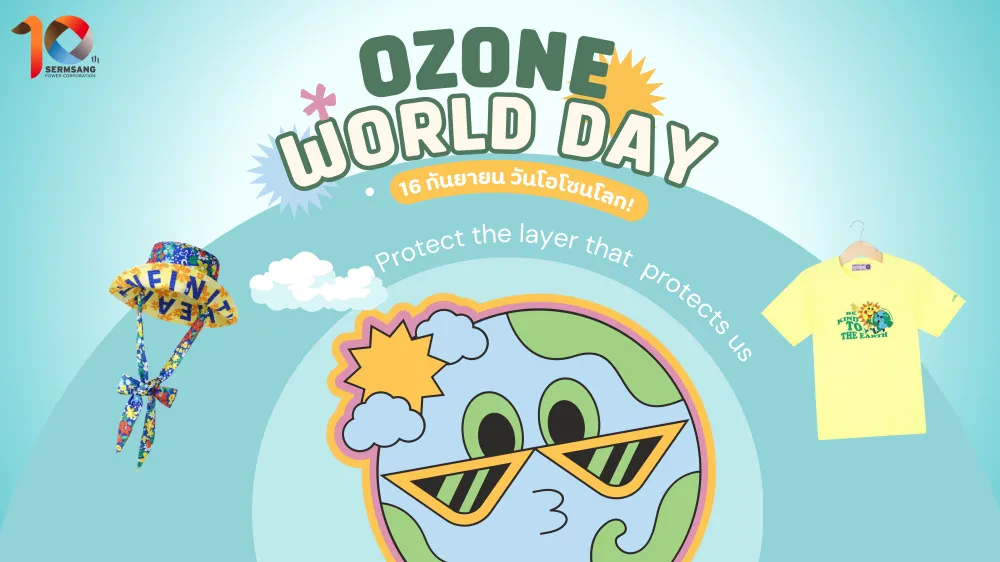
Climate Change and Air Pollution Management
Importance and Mission
The significance of climate change mitigation and resilience for the Group is directly linked to the efficiency, stability, and sustainability of its renewable energy operations. As a company focusing on solar, wind, and biomass energy, the Group must manage both transition risks and physical risks. Effectively addressing climate-related risks will enhance business resilience, ensure compliance with regulations, and build stakeholder confidence. The Group recognizes that climate change is not only an environmental and societal challenge but also an urgent business priority. With a strong commitment to sustainable business practices, the Group integrates climate change considerations into its core operations, aligning with global efforts to reduce impacts and transition to a low-carbon future.
SDGs in the Climate Change
and Air Pollution Management
and Air Pollution Management
Goals and Performance Highlights
Goals
Performance Highlights 2024
| Greenhouse gas emissions | HO | SPN | SS | SN | UPT | WINCHAI | SEG | TGC | TTQN | SSE | TTTV | Total Year 2024 | |
|---|---|---|---|---|---|---|---|---|---|---|---|---|---|
| Direct Greenhouse Gas Emissions of the Organization – Scope 1 | |||||||||||||
| Stationary Combustion | 0 | 0 | 0 | 2.52 | 4,449.21 | 0 | 0 | N/A | 0.47 | 0 | N/A | 4,452.20 | |
| Mobile Combustion | 0 | 0 | 0 | 13.02 | 1.16 | 0 | 0 | 19.18 | 2.19 | 0 | N/A | 35.56 | |
| Fugitive (Leakages and Others) - Fire suppressant CO2 - Methane emission from septic tank |
3.46 | 5.10 | 0.93 | 9.7 | 5.19 | 0.93 | 0 | N/A | N/A | 0 | N/A | 25.31 | |
| Scope 1 Greenhouse Gas Emissions- Thailand | 4,491 | ||||||||||||
| Scope 1 Greenhouse Gas Emissions- Overseas | 22 | ||||||||||||
| Total Scope 1 Greenhouse Gas Emissions | 4,513 – Compared to 2023, the amount increased due to recalculation verification and the inclusion of biomass fuel reporting under Scope 1. | ||||||||||||
| Indirect Greenhouse Gas Emissions from Energy Consumption – Scope 2 | |||||||||||||
| Electricity Consumption | 10.58 | 305.5 | 10.41 | 0 | 63.6 | 244.1 | 311.96 | 0 | 469.43 | 0 | 352.47 | 1,768.04 | |
| Scope 2 Greenhouse Gas Emissions - Thailand | 634 | ||||||||||||
| Scope 2 Greenhouse Gas Emissions - Overseas | 1,134 | ||||||||||||
| Total Scope 2 Greenhouse Gas Emissions | 1,768 – Compared to 2023, the amount increased due to recalculation verification and the additional reporting of the wind power generation project, Winchai Project. | ||||||||||||
| Other Indirect Greenhouse Gas Emissions – Scope 3 | |||||||||||||
| Energy and fuel consumption by subcontractors for electricity production and maintenance activities | 0 | 35.60 | 0 | 0 | 458.82 | 0.27 | N/A | N/A | N/A | N/A | N/A | 494.69 | |
| Business air travel | 76.54 | 0 | 0 | 0 | 0 | 0 | N/A | N/A | N/A | N/A | N/A | 76.54 | |
| Employee commuting using private vehicles | N/A | 5.83 | 4.83 | 0 | 4.27 | 7.22 | N/A | N/A | N/A | N/A | N/A | 22.15 | |
| Municipal water consumption | N/A | 0.56 | 0 | 0 | 46.30 | 0.18 | 0 | 0 | 0 | 0 | 0.41 | 47.45 | |
| Paper Consumption | N/A | N/A | 0.01 | 0 | 0.21 | N/A | N/A | N/A | N/A | N/A | N/A | 0.22 | |
| Scope 3 Greenhouse Gas Emissions - Thailand | 640.64 | ||||||||||||
| Scope 3 Greenhouse Gas Emissions - Overseas | 0.41 | ||||||||||||
| Total Scope 3 Greenhouse Gas Emissions | 641.05 – Compared to 2023, the amount decreased due to the UPT Project implementing a program to eliminate the landfilling of biomass ash, which was a significantly large portion of the Group’s emissions. | ||||||||||||
| Total Revenue (million baht) | 3,508.06 | ||||||||||||
| Ratio of Greenhouse Gas Emissions Scope 1 & 2 per Unit of Electricity Generation (Unit: tCO2e per megawatt-hour) | 0.0093 | ||||||||||||
| Ratio of Direct and Indirect Greenhouse Gas Emissions (Scope 1 and Scope 2) per Total Revenue of the Group (tCO2e per million baht) | 1.8 | ||||||||||||
Management Approach
Climate Change
The Group's operational approach focuses on two key areas: managing Transition Risk by adapting to evolving policies, technologies, and market dynamics, and managing Physical Risk through robust infrastructure and environmental strategies under the theme of “Preserving the Environment” to mitigate the impacts of extreme weather events and shifting climate patterns. The Group prioritizes innovation and fosters collaboration with partners, stakeholders, and relevant parties to drive positive change. By delivering renewable energy solutions, the Group is committed to creating a sustainable future for all, through continuous strategic planning and development, with a focus on making a meaningful impact and contributing to the global shift toward sustainability.
Risk Assessment of Climate Change Impact on Business Operations and Risk Mitigation Approaches/Measures

The Group conducts a comprehensive assessment of climate change risks that may impact business operations by identifying and evaluating both Transition Risks and Physical Risks. This assessment process is aligned with global climate frameworks such as the Nationally Determined Contributions (NDCs) and the 2°C Scenario (2DS) of the International Energy Agency (IEA), in order to strengthen strategic resilience in addressing climate-related threats.
The key elements of this process involve clearly defining roles and responsibilities within the climate governance structure. The Board of Directors holds ultimate responsibility for overseeing the management of climate-related risks and opportunities, ensuring that these issues are appropriately integrated into the organization’s strategic decision-making processes. The Board regularly reviews climate risk reports and sets long-term objectives to support the Group’s sustainability mission.
To support the oversight role of the Board of Directors, the Group has established a Risk Management Committee (RMC) comprising senior executives. The committee is responsible for monitoring, assessing, and managing climate-related risks across the organization. This includes evaluating the potential impacts of policy and regulatory changes, market dynamics, technological advancements, and both acute and chronic physical risks affecting the Group’s value chain. The RMC integrates these climate-related risks into the Group’s Enterprise Risk Management (ERM) framework and submits regular reports to the Board of Directors to ensure that risk responses are aligned with the Group’s sustainability goals and climate strategy.
Additionally, senior executives in key departments such as Business Development, Operations, Procurement, and Sustainability play a crucial role in implementing climate risk mitigation strategies and identifying new opportunities related to the energy transition. Each department plays an important role in driving the Group's adaptation strategy, including investments in climate-resilient infrastructure, low-carbon technologies, and renewable energy innovation.
Carbon and Emission Reduction
To achieve Net Zero Emissions by 2050 and Carbon Neutrality by 2030, the Group adopts a comprehensive strategy, including renewable energy expansion, energy efficiency enhancement, carbon offsetting projects, and sustainable operational practices. Key approaches include:
01
Reduce operational greenhouse gas emissions (Scope 1 & 2) by 50% by 2035 – Improve energy efficiency by upgrading to high-efficiency machinery, utilizing Carbon Capture and Storage (CCS) technology, studying carbon sequestration in soil, and atmospheric carbon absorption.
02
Reduce emissions from supply and value chains (Scope 3) by 30% by 2040 – Collaborate with suppliers and partners to reduce greenhouse gas emissions by encouraging sustainable material usage, low-carbon transportation, renewable energy, optimizing low-carbon transport systems through electric vehicles, hydrogen, biofuels, and applying circular economy principles by recycling solar panels, wind turbine blades, and biomass materials to reduce emissions from materials and waste.
03
Reduce greenhouse gas emissions intensity per production volume by 40% by 2035 – Enhance power plant efficiency to increase energy production while emitting fewer greenhouse gases and employ heat recovery technologies, using excess heat from biomass power plants to reduce fuel usage.
04
Increase transparency, compliance with standards, and access to green financing – Adhere to international climate standards including Science-Based Targets (SBTi), TCFD, ISO 14064 (GHG emissions calculations), and transparently disclose information through clear, verifiable GHG and ESG performance reports to build investor confidence.
Pollution Control and Environmental Stewardship
To ensure effective air pollution control in alignment with international environmental standards, the Group has established the following key operational approaches:
01
Pollution Control Technologies: Install air filtration and pollutant capture systems such as Electrostatic Precipitators (ESP) at biomass power plants (e.g., UPT) to reduce airborne toxins and particulates.
02
Compliance with Environmental Standards: Follow national and international air pollution standards (e.g., WHO air quality standards, ISO 14001). Conduct regular emission reporting and implement mitigation to maintain emission levels below regulatory thresholds. Control combustion temperature and select low-emission feedstock materials.
03
Continuous Air Quality Monitoring: Implement Continuous Emission Monitoring Systems (CEMS) to track emissions in real-time, enabling prompt corrective action. Monitor ambient air quality near power plants and communities to ensure no harmful impact.
04
Stakeholder Engagement: Collaborate with government, environmental agencies, and communities to propose pollution reduction solutions and promote clean energy. Educate staff and the public on air pollution prevention and impact mitigation.
05
Wind Turbine Noise Control Ensure wind turbine noise levels remain under 70 dBA in accordance with WHO guidelines. Turbines are installed at least 300 meters from residential areas, resulting in noise levels around 43 dBA, which is safe for human hearing.
Wind Turbine Noise Data – Winchai Project, Mukdahan Province
Noise measurements were conducted on December 20–21, 2024 at four stations: Ban Romklao (N1), Ban Nong Nok Khian (N2), Ban Lupping (N3), and Wat Phu Yang Diao (N4).
Noise Measurement Results (dB(A)):
The noise monitoring results are presented across four key sound level indicators:
- Leq 24 hr: Average sound level over a 24-hour period
- Lmax: Maximum recorded sound level
- Ldn: Day-Night Average Sound Level
- L90: Background noise level
| Station | Noise Measurement Results (dBA) | |||
|---|---|---|---|---|
| Leq 24 hr | Lmax | Ldn | L90 | |
| 1. Ban Romklao (N1) | 47.2-50.5 | 79.0-89.9 | 50.1-53.2 | 43.7-46.5 |
| 2. Ban Nong Nok Khian (N2) | 48.6-50.9 | 82.2-95.6 | 51.3-55.0 | 45.5-48.3 |
| 3. Ban Lupping (N3) | 49.4-52.6 | 80.3-86.6 | 54.8-58.7 | 45.8-49.7 |
| 4. Wat Phu Yang Diao (N4) | 50.8-53.1 | 71.5-87.2 | 57.6-59.8 | 48.0-40 |
| Standard | 70 | 115 | - | - |
*Standard based on National Environmental Board Notification No. 15 (B.E. 2540): Leq 24 hr ≤ 70 dBA, Lmax ≤ 115 dBA







